SJRC Visiting Scholar Sally Lehrman (Knight Ridder/Mercury News Professor in Journalism and the Public Interest, Santa Clara University), speaks about what constitutes responsible practices of investigation in journalism, and what might we learn from and with journalism about the challenges of constituting responsible practices of investigation in science?
Sally Lehrman, an award winning journalist and our first Science and Justice Professor, will speak to us about how questions of responsibility in investigative journalism relate to questions of responsibility in science. We look forward to thinking with Sally about how to create more responsible science reporting, particularly in the area of race, gender and genomics. We will ask what these efforts in journalism might reveal about efforts to create more responsible natural and social sciences. While many people think of journalists as distorting responsible science, Sally's work will challenge us to think in a more nuanced way about the relationship between science and journalism, and about how public knowledge about science is produced.
Sally Lehrman, "Investigative Justice"
SJWG Rapporteur Report
13 November 2013
Rapporteur Report by Lizzy Hare
Sally Lehrman, an award winning journalist and the first Science and Justice Professor, spoke to the working group about responsibility in investigative journalism and how it relates to questions of responsibility in science. Lehrman is especially interested in matters of justice and diversity in journalism and science, and wants to work with Science and Justice to think about how science, and journalism can intersect towards the idea of justice.
Lehrman began her presentation with a video of a white supremacist whose DNA ancestry is revealed to him on a British talk show. The test results show that he is 14% sub-Saharan African, and he rebukes, claiming that this is simply statistical noise. Lehrman wanted to show this video because it raises questions about what genomics does, and by extension, what science can do. She then asked us to think about the following questions: Can science solve social problems? Can journalism assist? Should it? How well is it doing? Could it be done better?
Lehrman then gave a brief overview of the ambitions of journalism and some of its historical problems. In some ways, these ambitions and problems are shared with the field of science. Journalists see their duty as informing the public and providing the public with information so that the public may address the issue. The information provided to the public should be truthful, fair, and comprehensive. These ambitions are not always easy to obtain. Journalism as a field is disproportionately white and male, and both journalistic sources and the subjects of coverage reflect racial and gender bias as well. The underrepresentation of groups in the newsroom and as sources and subjects can lead to stereotyping.
According to Lehrman, journalism’s goal is to seek truth and report it. The trouble with science reporting is that because many journalists see scientists as holding the truth, and because scientists typically agree, journalists think that they can take a shortcut when reporting on science. This leads to science being presented as if it holds the solution to social woes without further discussion or debates about how society should use that information. Lehrman suggests that science writers need to be attentive to their own social conditioning and the structures within their field that shape the way they conduct their investigations. Just like with other types of reporting, science journalists need to remember to question the newsworthiness, usefulness, credibility, and framing of scientific stories. Practically speaking, her proposed intervention can be summed up as “question the questions and question the interpretations.”
The final slide in the presentation was an image that she hoped we could discuss. It is from an exhibit on genomics, and she is hoping that our expertise and interest in matters of science and justice could provide useful thoughts on the image. The image shows a female mannequin-like figure with genetic code imprinted on her. She’s dark brown, and lacks facial features and hair. The question next to her reads: “Can genes tell us who we are?” We discussed this image in small groups and then convened to share our thoughts. The working group thought that the image was supposed to seem futuristic, which prompted additional comments about why future people are so often portrayed as hairless
and of indeterminate ancestry and culture (depicted here with light brown skin tone and without hair or clothing to provide clues). Others were troubled by the use of a female body. Was this a conscious attempt not to reproduce the gender bias in medical research? Or does it perpetuate the female body as an object for the scientific male gaze? Or was it because the female form is considered more approachable in our culture?
After the discussion of the image, audience members shared their responses to and questions for the presentation. One person commented that perhaps there should be more burden of responsibility on the informant to help get the story right. Lehrman’s response to this was that typically the journalist has a better understanding of the general audience than the scientist does. That said, she takes serious issue with journalists who write directly from press releases, which are intentionally sensational and might gloss over important points in the research. Working from press releases also adds in the trouble of time, because the turn around time between press release and publication is so short that investigations become truncated and dots aren’t connected. Heidi asked about the problem of “balance as bias” which is especially problematic in reports on climate change, which often grossly over represent the position of skeptics. Lehrman suggests that scientists can be helpful to journalists by pointing out where the debates actually lie within the field. These debates are likely to be much less sensational, but will more accurately reflect the status of mainstream science.




